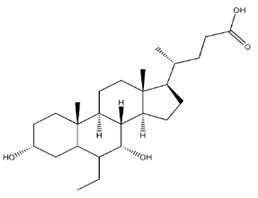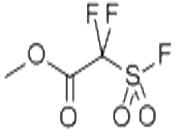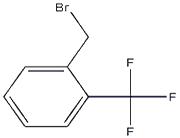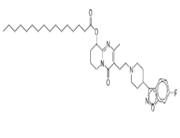| Description |
Obeticholic acid is a semi-synthetic bile acid analogue and acts as a farnesoid-X receptor (FXR) agonist. It is used for the treatment of primary biliary cholangitis. It is also under investigation for the treatment of other liver diseases,primary biliary cirrhosis, bile acid diarrhea and related disorders. Study has shown that it also has potential for treating nonalcoholicsteatohepatitis (NASH), and portal hypertension. Obeticholic acid takes effect through acting s the agonist of the farnesoid X receptor (FXR), which is the regulator of bile and cholesterol metabolism in the liver. |
| Indications and Usage |
Obeticholic acid is also called 6-Ethylchenodeoxycholic acid. It is a new derivative of chenodeoxycholic acid (CDCA) in human primary bile acids, a natural ligand for farnesoid x receptors (FXR). Obeticholic acid was developed by American pharmaceutical company Intercept as the first drug to treat cholestatic liver disease in 20 years, and it is administered on patients that do not respond well to or cannot tolerate the old standard treatment drug ursodeoxycholic acid. Obeticholic acid has also been tested to treat a more common form of fatty liver – non-alcoholic fatty liver disease (NAFLD). Obeticholic acid can also be developed to treat other liver and intestine diseases. |
| Mechanisms of Action |
Obeticholic acid belongs to FXR stimulants, activating FXRs and indirectly inhibiting Cytochrome P450 Family 7 Subfamily A Member 1 (CYP7A1) expression. As CYP7A1 is a rate-limiting enzyme of bile acid biosynthesis, obeticholic acid can inhibit the bile acid synthesis and is used to treat primary biliary cirrhosis. |
| Clinical Research |
In a placebo control phase III clinical trial, Obeticholic acid increased levels of two biomarkers indicating lowered risk in liver transplant. The composite end point of the clinical research is that alkaline phosphatase lowered by at least 15%, serum alkaline phosphatase activity was 1.67 times lower than the normal upper limit, and bilirubin levels were within normal range; alkaline phosphatase is a biomarker indicating liver disease severity. An American 6-week, multi-center, randomized, and double-blind clinical trial included 64 cases of type 2 diabetes patients with NAFLD, and it proved that Obeticholic acid not only increased insulin sensitivity, but also improved liver inflammation and fibrosis levels, and it has certain weight-reducing effects. However, this conclusion requires further investigation with a larger and more long-term follow-up, as well as scientific backing in liver pathology. |
| References |
Verbeke, L, et al. "Obeticholic acid, a farnesoid X receptor agonist, improves portal hypertension by two distinct pathways in cirrhotic rats."Hepatology 59.6(2014):2286-98.
Silveira, M. G., and K. D. Lindor. "Obeticholic acid and budesonide for the treatment of primary biliary cirrhosis." Expert Opinion on Pharmacotherapy 15.3(2014):365. |
| Definition |
ChEBI: A dihydroxy-5beta-cholanic acid that is chenodeoxycholic acid carrying an additional ethyl substituent at the 6alpha-position. A semi-synthetic bile acid which acts as a farnesoid X receptor agonist and is used for treatme t of primary biliary cholangitis. |

 China
China






